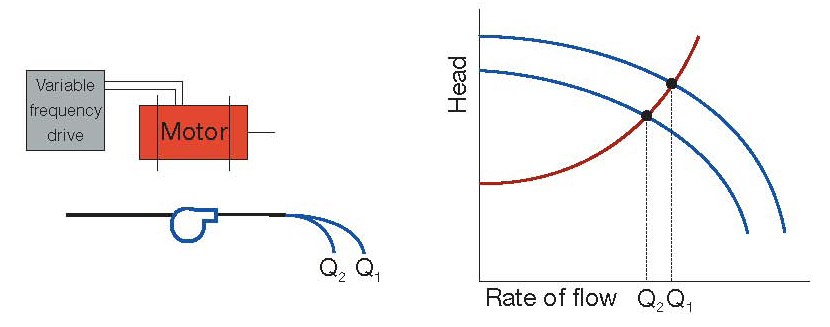Produced by the Hydraulic Institute
Q. How can analyzing life-cycle costs help pump owners make decisions about their pumping systems?
A. Analyzing life-cycle costs is a management tool for comparing different systems and selecting an optimal solution that will produce economic and environmental benefits over the life of the system. Additionally, a well-designed life-cycle-cost program can help avoid inordinately high operating costs and, therefore, lower the total cost of ownership. The total cost of ownership is a valid concern when analyzing industrial and municipal pumping systems, which often have life spans of 15 years or more, making it essential to factor the lifetime costs of energy, maintenance and other elements into the design and selection of the pumping system.
The basic elements of life-cycle cost include:
- Initial purchase
- Installation and commissioning
- Electrical or other energy
- Operation
- Maintenance and repair
- Downtime
- Environmental protection
- Decommissioning/disposal
Minimizing life-cycle costs often requires trade-offs between cost elements—such as paying a higher initial or installation cost to reduce overall long-term maintenance, energy and downtime costs. When analyzing a current operating system and comparing it to other systems, take into account the current cost of energy and an estimate of the annual price escalation for energy and maintenance in the life-cycle cost analysis.
Overall, the key to maximizing cost savings is improving the total system efficiency, not just the efficiency of one component. It is easy to get caught up in choosing the most efficient component in terms of initial costs, while ignoring the overall system efficiency. To achieve optimum pump system economics, end users should select equipment at peak performance operation.
Pump Life Cycle Costs: A Guide to LCC Analysis for Pumping Systems, a collaborative effort of the Hydraulic Institute, Europump and the U.S. Department of Energy’s Office of Industrial Technologies is a life-cycle costing guidebook that has been developed to increase industry experts’ awareness of the subject.
 |
| Figure 4.15. Pump controlled by speed variation |
Q. What are the effects of varying speed in pumping systems with predominant friction head and systems with high static head?
A. To understand how speed variation changes the duty point, the pump and system curves are overlaid. Note that the operating point always falls at the intersection of the pump curve and the system curve. See Figure 4.15. Two systems are considered in Figures 4.16 and 4.17, one with friction loss only and the other with static head high in relation to friction head.
In Figure 4.16, the effects of reducing speed in a friction-only system are shown. The pump duty curve intersection point on the system curve moves along a curve of nearly constant efficiency. The operating point of the pump, relative to its best efficiency point, remains nearly constant, and the pump continues to operate in its ideal region. This means that a substantial reduction in power absorbed accompanies the reduction in flow and head, making variable speed control an excellent method for systems in which friction loss predominates.
.jpg) |
| Figure 4.16 Example of a the effect of pump speed change in a system with only friction loss |
In a system with static head, the system curve does not start from the origin but at some nonzero value on the y-axis, which corresponds to the static head. This is shown in Figure 4.17. The reduction in flow is no longer proportional to speed; a small turn down in speed could result in a large reduction in the rate of flow. In turn, this means that the pump efficiency changes when the speed of the pump changes. While the reduction in pump input power may still be significant, the benefit is diminished by a reduction in the pump efficiency.
.jpg) |
| Figure 4.17. Example of the effect of pump speed change in a system with high static head |
In systems with high static head, selecting a pump with a system curve that intersects the full-speed pump curve slightly to the right of the best efficiency point (BEP) is often beneficial. In these cases, the pump efficiency will first increase with the flow demand and, as a result, the speed is reduced. As the flow continues to decrease, the efficiency is reduced. This can extend the useful range of variable speed operation in a system with static head. The pump manufacturer shall be consulted on the safe operating speed range for the pump, since reduced pump flow may adversely affect the hydraulic stability of the pump.
In a high static head system, variable speed drives may not yield an energy saving or economically justifiable benefit. Decreasing the speed too much can cause the flow to approach shutoff, and the energy input to the pump will result in the heating of the liquid through friction. Then extreme temperatures can quickly be reached, resulting in severe damage to the equipment. However, a variable speed drive may prove useful should the system require frequent controlled starts.
For further information on the effects of speed variations in pumping systems, please refer to the Hydraulic Institute’s Optimizing Pumping Systems: A Guide to Improved Energy Efficiency, Reliability and Profitability.

